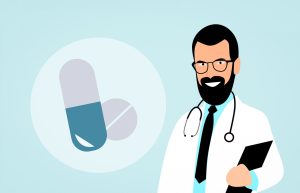The Opioid Crisis: Stories, Struggles, and Solutions
Introduction
The opioid crisis has carved deep scars across societies, communities, and households. More than a matter of statistics, it is a human calamity that has reshaped public health priorities. The crisis stems from complex layers—medical, social, and economic—that intertwine to create a formidable challenge. It is not only about drugs but about lives interrupted, families torn apart, and futures rewritten.
Accessing Treatment from Home
In today’s digital world, healthcare has become more accessible than ever, especially for individuals seeking help with opioid addiction. Through telemedicine, patients can now connect with online suboxone doctors who provide personalized care, prescription management, and ongoing support without the need to visit a clinic in person. This approach eliminates transportation barriers, reduces stigma, and ensures timely access to treatment. Patients can schedule appointments at their convenience, receive counseling, and have medications sent directly to their pharmacy. By combining flexibility with professional care, virtual platforms make recovery more approachable and supportive for those in need.
The Origins of the Crisis
The roots of this crisis stretch back to the 1990s, when prescription opioids were heralded as breakthrough medications for pain management. Pharmaceutical companies aggressively marketed these drugs, often downplaying their addictive potential. Physicians, persuaded by these narratives, prescribed opioids with increasing frequency.
Regulatory safeguards lagged behind the pharmaceutical push. Overprescribing flooded communities with highly potent substances, setting the stage for widespread dependency. What began in doctor’s offices spilled into illicit markets, paving the way for heroin and synthetic opioids like fentanyl to tighten their grip.
Human Stories Behind the Statistics
Behind every statistic lies a human story—a mother battling dependency after a back injury, a young professional who spiraled into addiction after surgery, a teenager introduced to pills at a party. These accounts are not abstractions; they reveal the vulnerability that anyone can face when exposed to powerful opioids.
Families often endure the collateral damage. Parents lose children, children lose parents, and communities lose neighbors. The ripple effects of addiction spread far beyond the individual, destabilizing entire support systems.
The Struggles of Recovery
Recovery from opioid addiction is a formidable battle. The body wages war against withdrawal symptoms—chills, muscle pain, insomnia—while the mind contends with cravings and despair. Psychological hurdles, such as depression and anxiety, often exacerbate the struggle.
Beyond the physical and mental toll, stigma looms large. Addiction is frequently misunderstood as a moral failing rather than a medical condition, discouraging many from seeking help. This societal judgment creates an invisible barrier, leaving countless individuals untreated and isolated.
The Role of Communities
While the crisis is vast, communities have become crucibles of resilience. Grassroots organizations, often run by those with lived experience, provide critical support through peer mentoring and local outreach. Support groups, food drives, and counseling circles help to restore dignity and belonging.
Faith-based groups and nonprofits also step forward, bridging gaps in treatment accessibility. By combining compassion with practical aid, these community-driven efforts become lifelines for individuals who might otherwise slip through institutional cracks.
Medical and Policy Responses
Healthcare professionals have embraced medication-assisted treatments (MAT) such as buprenorphine, methadone, and naltrexone, which alleviate withdrawal symptoms and reduce relapse risk. These interventions recognize addiction as a chronic illness requiring sustained medical attention rather than short-term fixes.
On a broader scale, state and federal initiatives have intensified. Prescription monitoring programs aim to reduce misuse, while legislation has expanded access to naloxone, the life-saving antidote to overdoses. Though progress is uneven, these policies mark a shift toward evidence-based approaches.
Emerging Solutions and Hope
Amid the devastation, new solutions are emerging. Harm reduction strategies—such as needle exchange programs and supervised consumption sites—prioritize safety and survival, creating pathways to recovery without judgment.
Innovative therapies, from mindfulness-based relapse prevention to trauma-informed care, are expanding the toolkit of treatment options. Equally vital are prevention programs in schools, which aim to educate younger generations before opioids can entangle their lives.
Finding the Right Support for Recovery
Accessing professional help is a crucial step for anyone struggling with opioid dependence. Many individuals benefit from treatment plans that include both medical guidance and counseling to ensure long-term success. Searching for suboxone doctors near me can be the first step toward finding specialized care tailored to individual needs. These doctors not only prescribe medication but also provide ongoing support and monitoring to help patients maintain stability. By connecting with the right provider, individuals gain access to compassionate care that addresses both physical and emotional aspects of recovery, offering hope and a healthier path forward.
Conclusion
The opioid crisis is both a tragedy and a test of collective will. While its roots run deep, so too does the capacity for change. Solutions require not only medical interventions but also empathy, resilience, and unity. Each effort—whether from a policymaker, physician, counselor, or neighbor—adds to the momentum of recovery.
The path forward is neither quick nor simple, but it is possible. By amplifying stories, confronting struggles, and investing in solutions, society can shift from despair to hope. The opioid crisis need not define the future; instead, it can inspire a new era of healing and responsibility.











Leave a Reply
Want to join the discussion?Feel free to contribute!